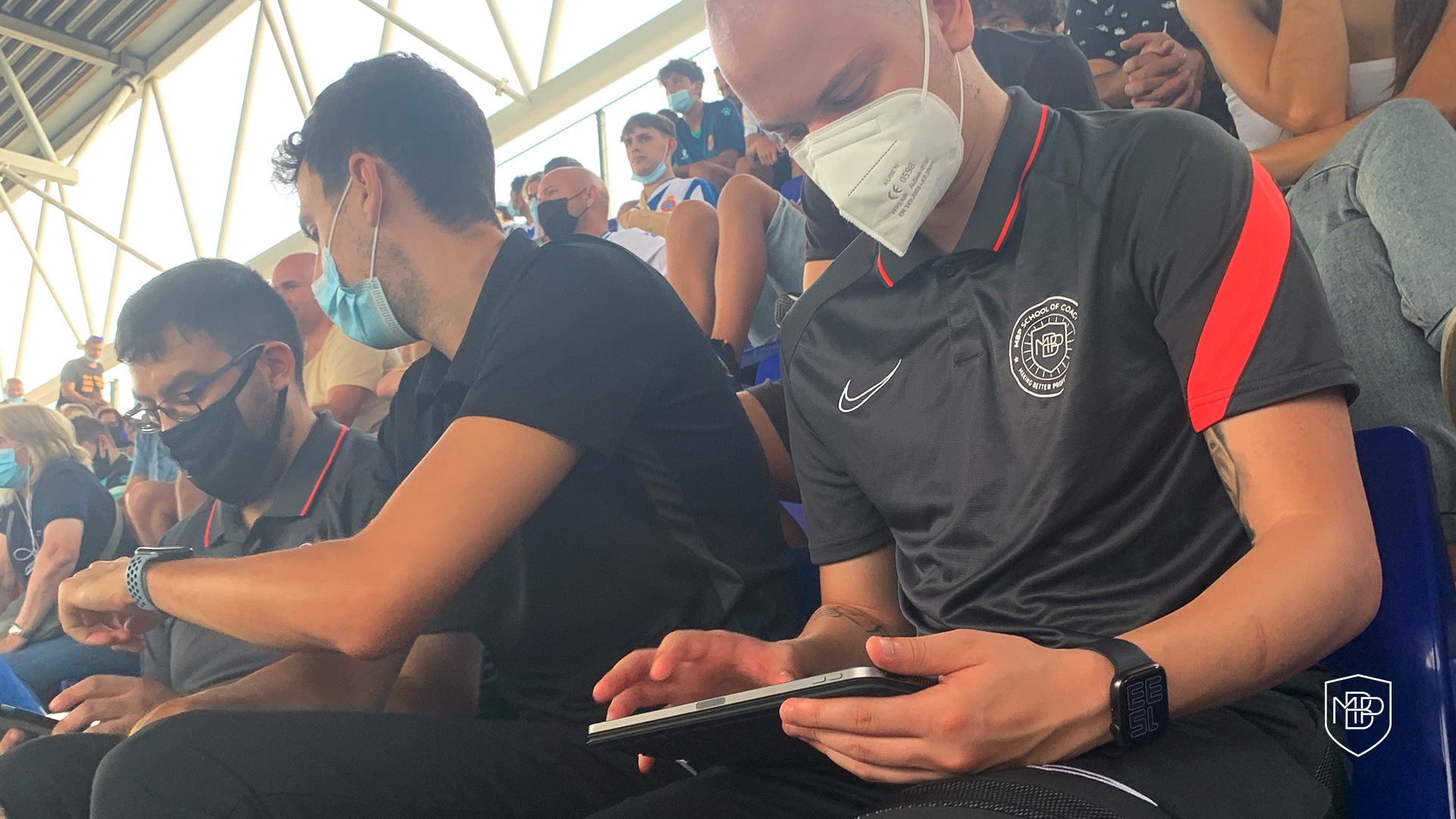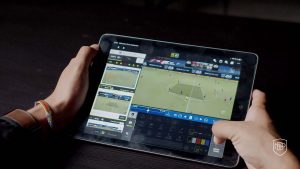After discussing in recent posts about the first two steps that should be made in an analysis of a team – the structural analysis and the dynamic analysis – we will now focus on the importance of the live analysis. This will look at the value of it within the phases of the game and the aspects which should be taken into consideration.
When watching a match, we can identify 4 different phases: the attacking phase, the defensive phase and the two transitions. As coaches, we must be able to detect what happens during these phases. For example, if we focus on the attacking phase. There are certain concepts of the game that we must know how to identify. The first of them, and which will be independent to the moment in which the team is, will be the structure that the team uses.
The structure will allow us to recognize the areas of responsibility and influence of each player at that particular moment of the play, and thus support us in making different decisions, as well as to those of the opponent.
Another of the key aspects to look for within the attacking phase will be the types of mechanisms the team uses in the different moments of the game. Although these ‘mechanisms’ can vary depending on a multitude of variables, there will always be aspects of the play that are more repeatable than others.
Finally, another factor that will be of great relevance when it comes to nullifying opposition teams is the identification of the key player, according to the moment of the game. We all remember Xavi Hernandez at FCB and his importance to the build up, progression of the play and in the finishing zone. One example to stop Xavi was Juanma Lillo’s approach at Almeria, imposing individual marking on him in order to make it virtually impossible for him to participate in the play.
If we look at the defensive phase of the game, there are further elements of the opponent that we must find out to enable us to find advantages against them. The first of these, as in the attacking phase, will be the structure. In this case, we will observe the zones that the opposition prioritize to defend. How they position themselves within it will be decisive to obtain positional advantages over them, and, at the same time, adjust what behaviors we want to implement in our players.
Secondly, another significant aspect will be to know which type of pressure the opponent applies depending on the different moments of the game. This factor will serve the purpose of avoiding playing into specific areas and thus be able to direct the play towards more favorable spaces for progression.
There will be several other factors that will be crucial to identify, including the height of the defensive line and the type of marking. Each of these will have its importance depending on the moment of the game in which the team is.
Finally, let’s introduce the transitions of the game, which hold a number of elements that will be essential for us to know.
In the attack-defence transitions, factors such as the change of mindset, the organization of the team at the moment of the turnover and even the frequency of turnovers depending on the moment of the game, will allow the coach to support their team in these ‘seconds’ of uncertainty that unfold in changes of possession.
On the other hand, if we look at the defence-attack transition, as in the reverse case, seeing how the team organizes itself after the turnover and analyzing which behaviors they use depending on where the ball was won will allow the team to anticipate the opponent’s behaviors.
In conclusion, live analysis is key in analyzing opponents, and even in the focus on the coach’s own team itself. The identification of the different aspects of the game that occur in its different phases will allow the coach to anticipate the opponent’s behaviors and be able to enhance their team’s own strengths according to the opponent’s weaknesses.






